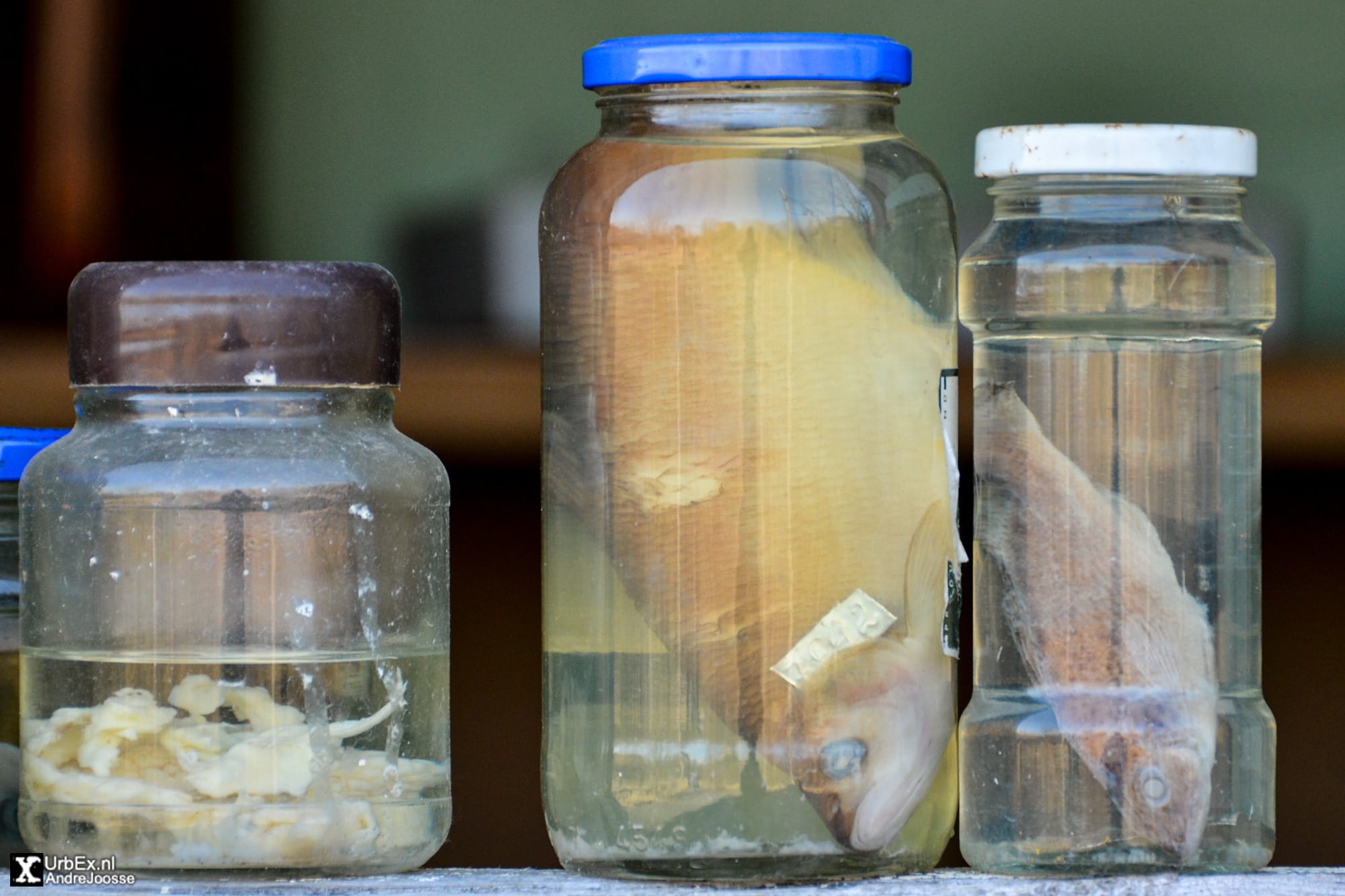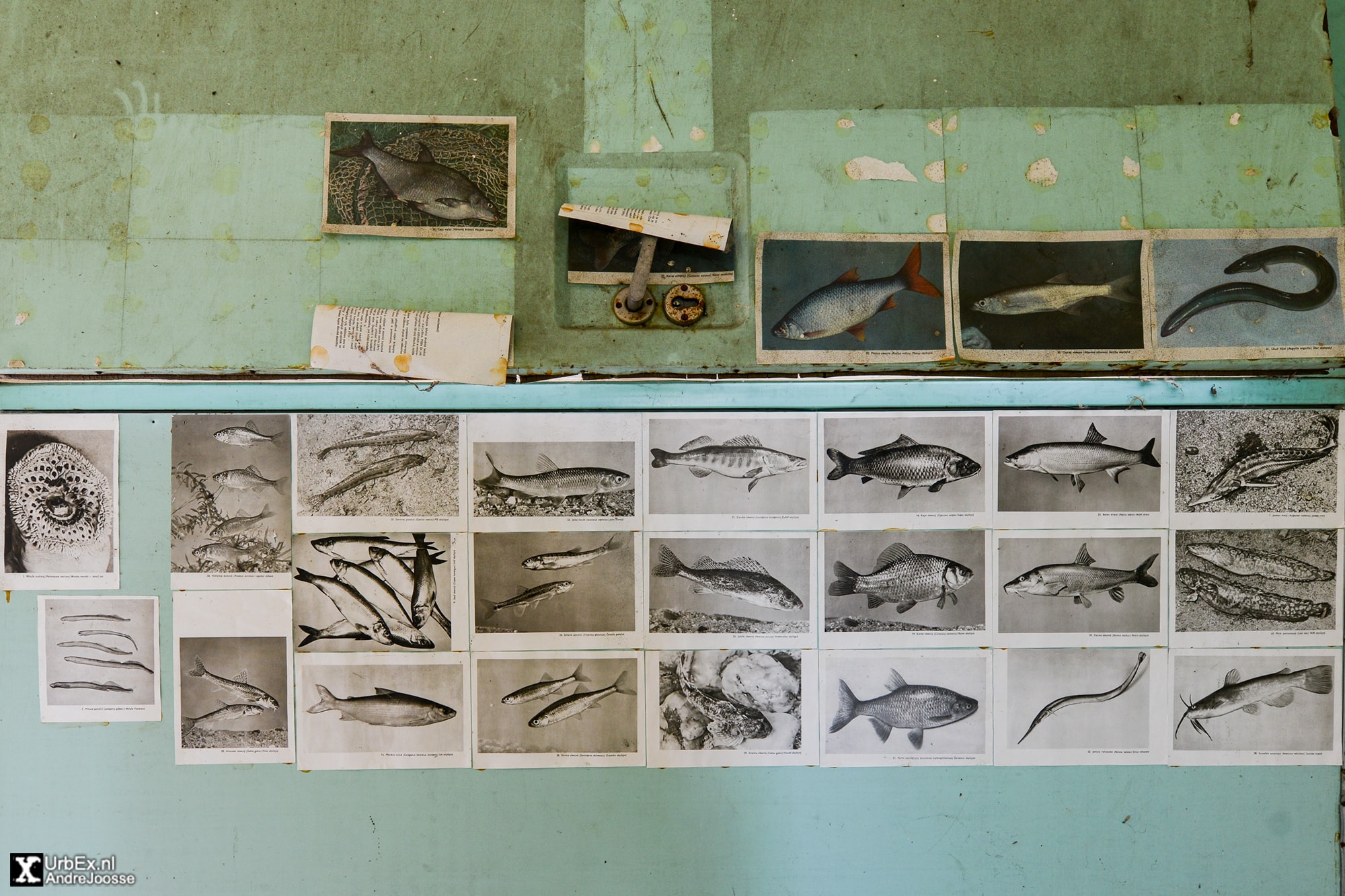Laboratory of Hydrobiology
Лаборатория гидробиологии

Until 2008 this abandoned scientific facility was home to different research centers. Before the Chernobyl Disaster in 1986 it was a fish breeding farm. During the aftermath of the disaster, it was used as a Laboratory of Hydrobiology.
The fish farm used to be part of Nagortsy, a small village with 248 inhabitants. The site is situated very close to the infamous Chernobyl Nuclear Power Plant. For this reason, the village was demolished to make place for the 26 square kilometers cooling pond. As a result, the people were forced to relocate to the other villages, some even got apartments in Pripyat. All that was left of the village is this farm and a monument for those who died during the Great Patriotic War.
The site is located on the banks of the cooling pond near the power station discharge channel. The cooling pond is an artificial open water reservoir which was intended for cooling heated water in the four reactors of the Chernobyl Nuclear Power Plant. A number of rusting fish pens still remain in place along its banks. The base was almost completely surrounded by water, for this reason it gave the site the unofficial name ‘island’.
The fish farm consisted of several buildings. The main two-story building housed both a laboratory and canteen. There was also a hatchery where they were breeding fish and a number of outbuildings.
Firstly, the fish farm was re-used as a radiological laboratory until 1996. Later, the base belonged to the ‘Chernobyl Centre for International Studies’. The ‘Laboratory of Hydrobiology’ tested the effects of radioactivity on fish and mollusks. Fish are considered to be the most radiosensitive aquatic organisms, and the fish in the cooling pond have been highly exposed. Also, there was a study of the ecosystem in the cooling pond.
In 2000 the Chernobyl Radio-ecological Center, or GSNPP Ecocenter, took over the buildings. Over time, the amount of research and work was reduced, and eventually the base was abandoned in 2008. Tools and equipment were taken out by the scientists, the rest was taken by looters.
A study led to catfish from the Chernobyl cooling pond did not find any positive correlation between radiation exposure level and chromosomal damage. But the studies did not stop in 2008 when the old fish farm was abandoned.


















